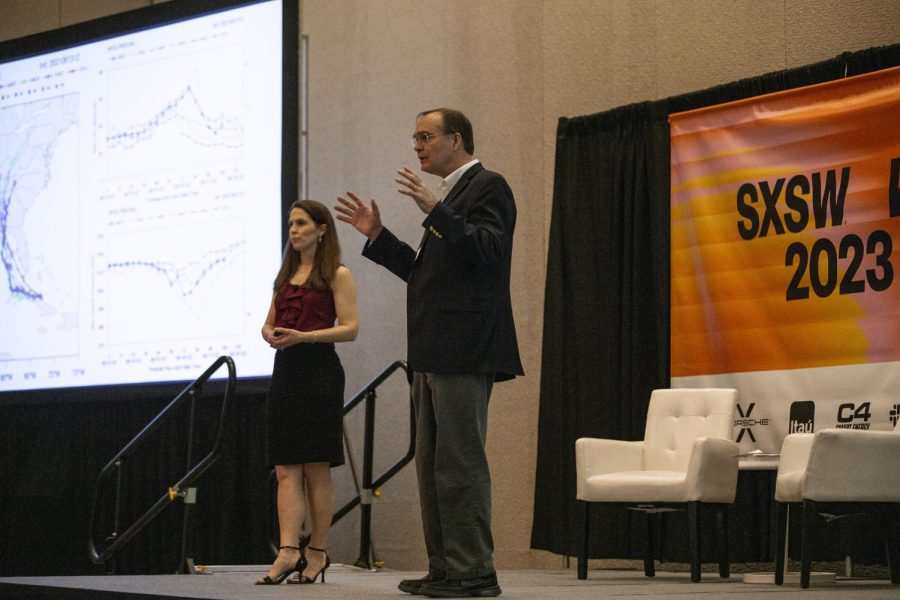Johns Hopkins researchers examine how artificial intelligence can help prepare for climate change effects at SXSW
March 16, 2023
Utilizing artificial intelligence tools, researchers at Johns Hopkins University aim to fight against and prepare for the worsening effects of climate change. In a South by Southwest session on Wednesday, Elizabeth Reilly, a senior applied mathematics researcher, and Jim Bellingham, a Bloomberg distinguished professor, shared how they harness the powers of AI in environmental research.
“At the Johns Hopkins Applied Physics Laboratory, we focus on solving critical challenges for our nation, and it’s becoming more and more apparent that climate change is one of those critical challenges,” Reilly said. “We’re thinking about our changing precipitation patterns, which ultimately can lead to additional instability and conflict over resource shortages, like food and water.”
The lab can employ AI technology by creating reliable data sets on weather systems and forecasts to be used in machine learning processes that generate reliable extreme weather predictions, Reilly said.
“We’re modeling the atmosphere and the environment in much greater detail than we once did,” Reilly said. “There’s a constant test of these systems, constant improvement and then constant rollout of those improved systems to the operational community. We’re feeding these systems much better datasets, so there is hope we can see a little bit of a roadmap of how we might get to a good place.”
Reilly said another way researchers can use AI to adapt to the effects of climate change comes in the form of air pollution and quality reports, which machine learning can process much more efficiently than systems in the past.
“We really want to know what’s happening with air quality at a deeper (level), but we’re limited by the power,” Reilly said. “These machine learning emulators end up being much more lightweight than the financial models, and this allows our forecasters to do more with the same computational resources.”
Doubts about credibility and dependability arise with new, emerging technology, but researchers can minimize those hesitations if they continue to source accurate data, Reilly said.
“If we can leverage the power of AI while ensuring that it’s trustworthy, we can use it to make tough decisions,” Reilly said. “We can use it to help us drive toward innovative solutions and adaptation and mitigation.”
Extreme weather scenarios and low air quality illustrate some of the current effects of climate change, Bellingham said, and scientists can start adapting to the changing environment with AI.
“We’re in the middle of one of the most massive transformations of our economy, of energy, that humans have seen,” Bellingham said. “You’re seeing decarbonization, we’re moving to renewables. That energy system you’re seeing is (becoming) digitized.”



